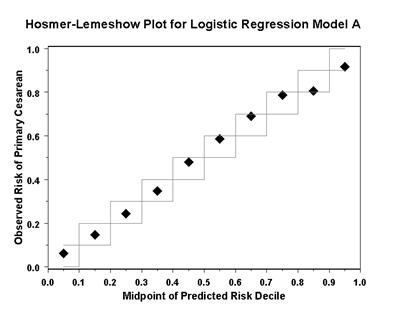| Meeting Brochure and registration form SMDM Homepage | |

|

|
|
||||
Purpose: To assess whether the addition of splines and interaction terms improve the performance of a validated risk-adjustment model for primary cesarean rates.
Methods: We built several logistic regression models for primary cesarean delivery using maternal risk factors. We utilized
Results: After cleaning, our models describe 382,566 births. We report on three logistic regressions motivated by exploratory analyses. Model A incorporates key predictors as linear main effects (C statistic .765). Model B uses restricted cubic splines to capture potential non-linearity in maternal age (C statistic .766). Model C adds interactions of maternal age with other key predictors (C statistic .766). Brier score was 0.117 for each. 
Conclusions: Despite significant differences in likelihood ratio testing (p<.0001), all three models show comparable discrimination and calibration, suggesting no real performance advantage for the more complex models. In the interests of parsimony and improving clinical understanding, we plan to focus future work on model A, which mirrors our previously validated approaches.
See more of Poster Session II
See more of The 28th Annual Meeting of the Society for Medical Decision Making (October 15-18, 2006)